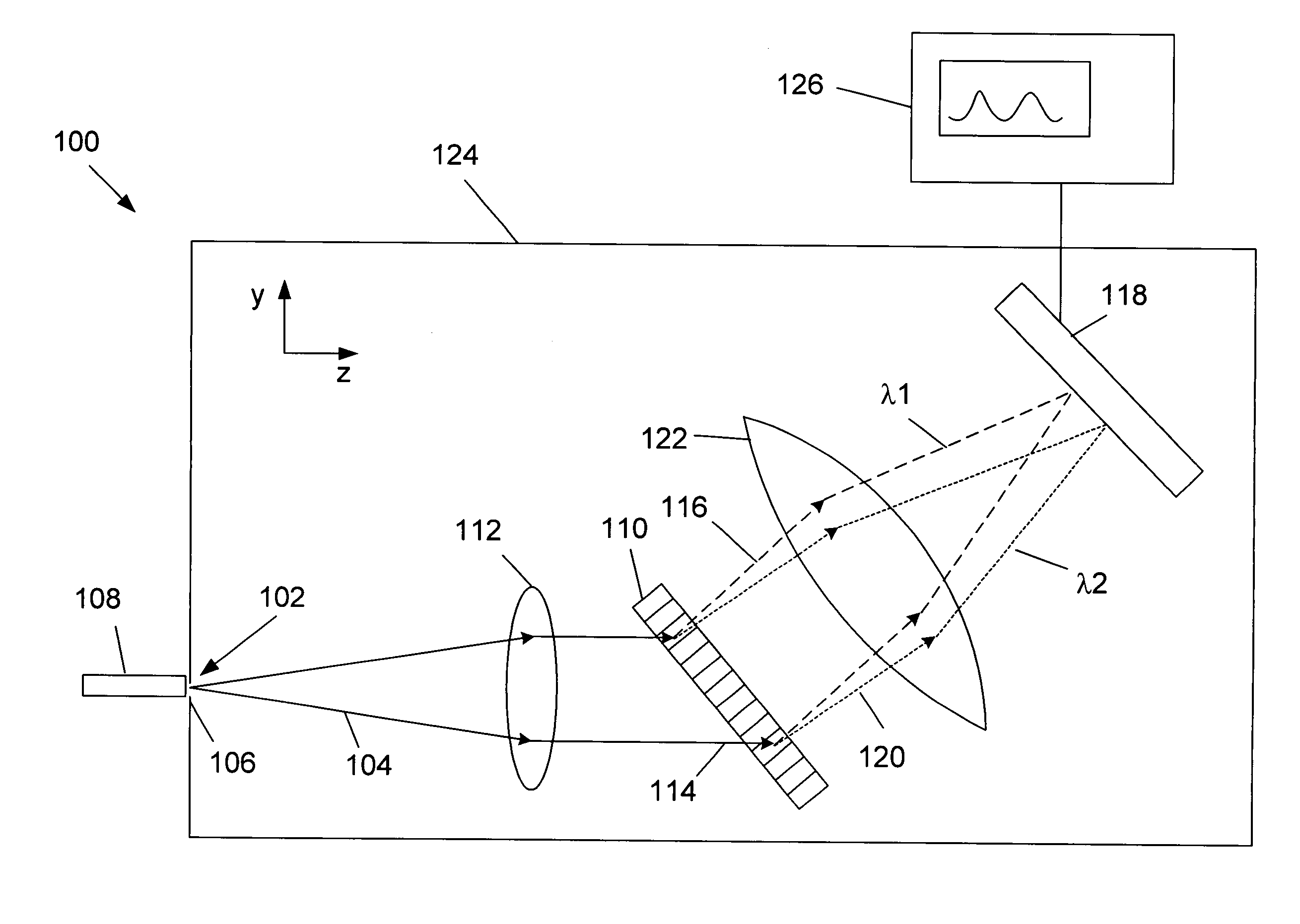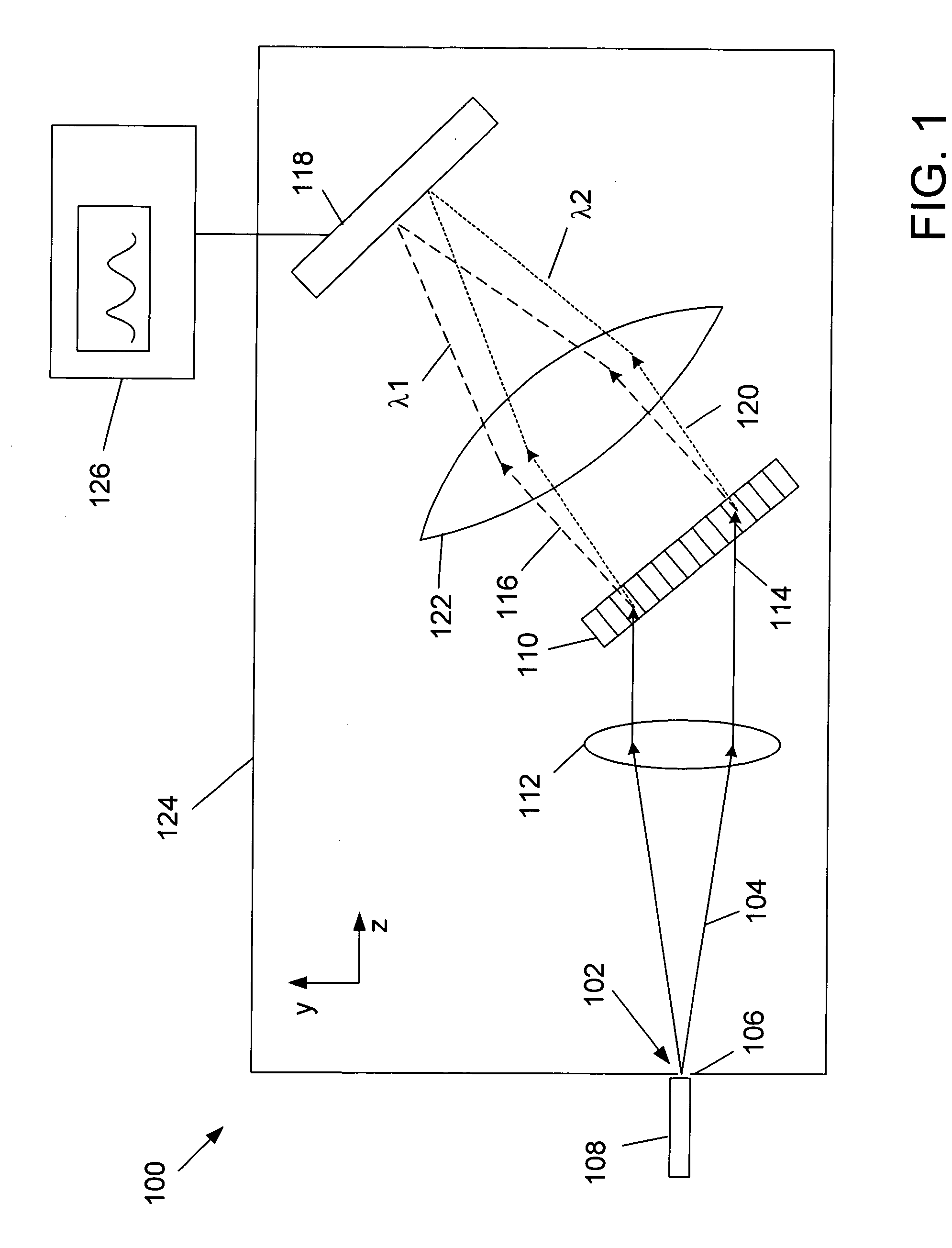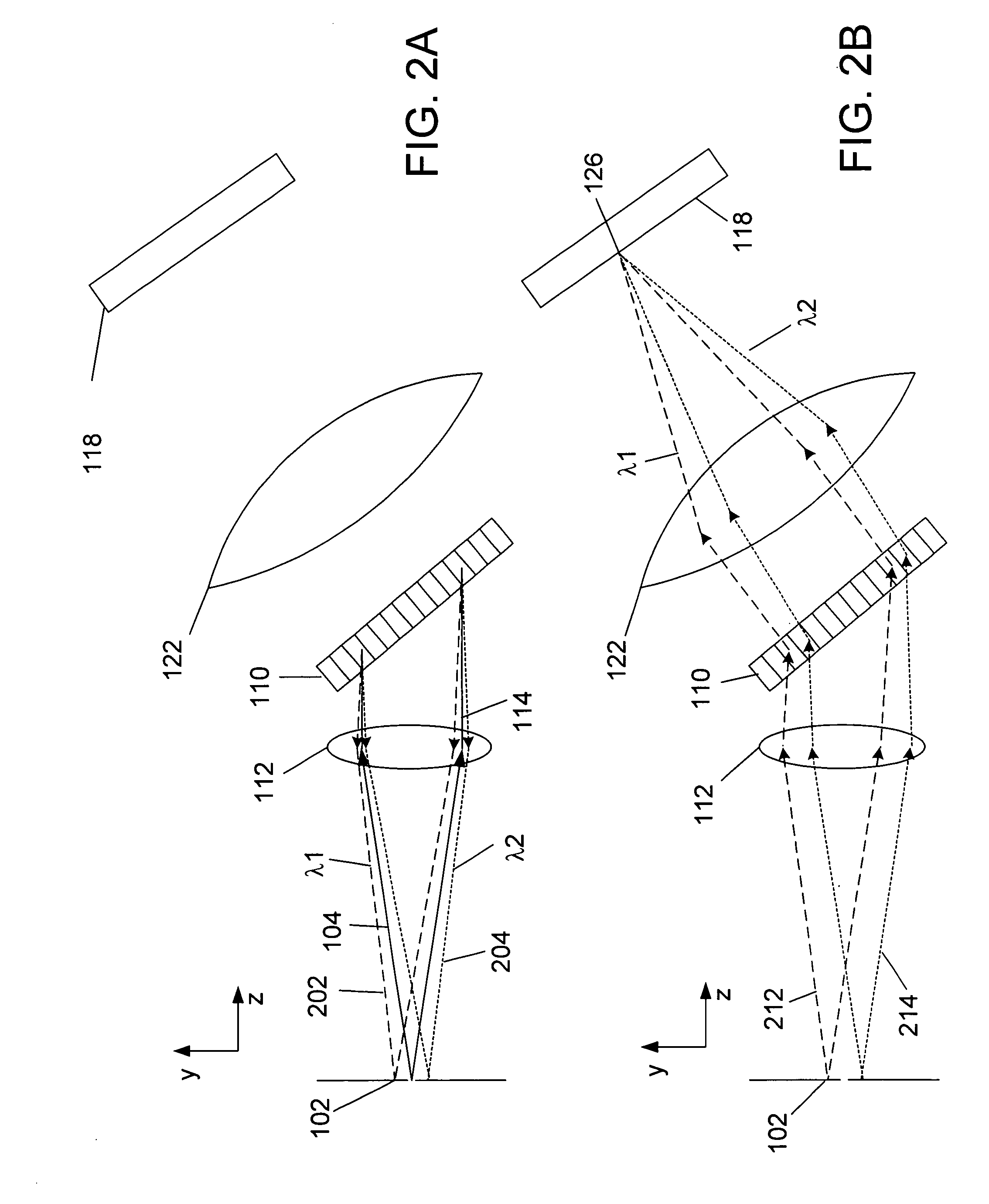Transmission spectrometer with improved spectral and temperature characteristics
a technology of transmission spectrometer and temperature characteristics, applied in the field of optical systems, can solve the problems of light propagation within the spectrometer, incident on the detector, diffraction element, warp or stretch, etc., and achieve the effect of reducing the effect of reflective diffracted ligh
- Summary
- Abstract
- Description
- Claims
- Application Information
AI Technical Summary
Benefits of technology
Problems solved by technology
Method used
Image
Examples
Embodiment Construction
[0027]An embodiment of a spectrometer 100 is schematically illustrated in FIG. 1. The spectrometer 100 has an input port 102 through which light 104 is introduced to the spectrometer 100. The input port 102 may include a slit 106, or an optical fiber 108, or a combination of both. An important function of the input port 102 is to provide some spatial restriction to the light 104 entering the spectrometer 100 so as to increase the resolution at the detector, since the input port 102 is typically imaged to the detector.
[0028]The light 104 passes from the input port 102 to a transmissive diffraction element 110, for example a diffraction grating. The divergence of the light 104 may be reduced by a first collimating unit 112. The first collimating unit 112 may comprise one or more lenses in combination. The first collimating unit 112 may collimate the light 104 so that the light 114 incident on the grating 110 is parallel. It is advantageous, although not necessary, that the first colli...
PUM
 Login to View More
Login to View More Abstract
Description
Claims
Application Information
 Login to View More
Login to View More - R&D
- Intellectual Property
- Life Sciences
- Materials
- Tech Scout
- Unparalleled Data Quality
- Higher Quality Content
- 60% Fewer Hallucinations
Browse by: Latest US Patents, China's latest patents, Technical Efficacy Thesaurus, Application Domain, Technology Topic, Popular Technical Reports.
© 2025 PatSnap. All rights reserved.Legal|Privacy policy|Modern Slavery Act Transparency Statement|Sitemap|About US| Contact US: help@patsnap.com



